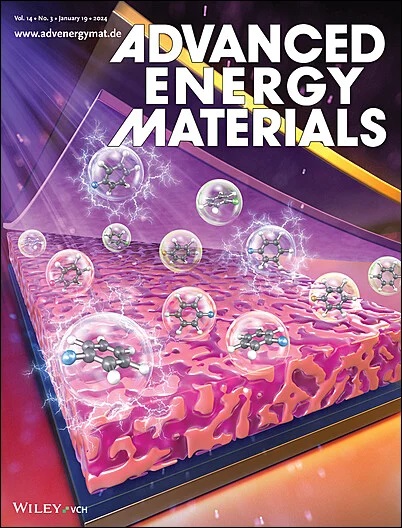Controlling the Third Component Distribution Toward High-Efficient Ternary Organic Solar Cells
IF 24.4
1区 材料科学
Q1 CHEMISTRY, PHYSICAL
引用次数: 0
Abstract
Ternary organic solar cells (T-OSCs) based on energy transfer can significantly boost the light absorption efficiency, thereby improving their power conversion efficiency (PCE). However, the uncontrolled distribution of the third component in bulk heterojunction (BHJ) device often results in low energy transfer efficiency (EFRET), and also tends to compromise the interpenetrating network structure of active layer. Herein, a localized deposition strategy is proposed and establish a bulk heterojunction with a controlled distribution of the third component (CDBHJ). Take PM6:Y6:IBC-F for example, IBC-F serves as the energy donor and PM6 as the energy acceptor. Compared with BHJ-based devices, the proportion of IBC-F within the PM6 phase increases from 25.1% to 72.7%, enhancing EFRET from 46.5% to 66.8% in CDBHJ-based devices. Furthermore, the localized deposition strategy improves crystallization and phase separation kinetics during film-forming process. Thus, the CDBHJ-based device exhibits superior exciton generation, diffusion, and dissociation process, along with higher and more balanced charge transport. Consequently, the CDBHJ-based device achieves PCE of 18.29%, which ranks among the best for PM6:Y6-based T-OSCs. This work demonstrates the effectiveness of the localized deposition strategy in controlling the distribution of the third component, presenting an innovative pathway for the development of highly efficient T-OSCs.

求助全文
约1分钟内获得全文
求助全文
来源期刊

Advanced Energy Materials
CHEMISTRY, PHYSICAL-ENERGY & FUELS
CiteScore
41.90
自引率
4.00%
发文量
889
审稿时长
1.4 months
期刊介绍:
Established in 2011, Advanced Energy Materials is an international, interdisciplinary, English-language journal that focuses on materials used in energy harvesting, conversion, and storage. It is regarded as a top-quality journal alongside Advanced Materials, Advanced Functional Materials, and Small.
With a 2022 Impact Factor of 27.8, Advanced Energy Materials is considered a prime source for the best energy-related research. The journal covers a wide range of topics in energy-related research, including organic and inorganic photovoltaics, batteries and supercapacitors, fuel cells, hydrogen generation and storage, thermoelectrics, water splitting and photocatalysis, solar fuels and thermosolar power, magnetocalorics, and piezoelectronics.
The readership of Advanced Energy Materials includes materials scientists, chemists, physicists, and engineers in both academia and industry. The journal is indexed in various databases and collections, such as Advanced Technologies & Aerospace Database, FIZ Karlsruhe, INSPEC (IET), Science Citation Index Expanded, Technology Collection, and Web of Science, among others.
 求助内容:
求助内容: 应助结果提醒方式:
应助结果提醒方式:


